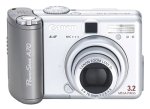

 |

|
 |
 |
||||
|
|||||
Recent ArticlesClojure is a relatively new language to appear on the Java Virtual Machine (JVM), although it draws on very mature roots in the form of the LISP langu ... Should You Care About Requirements Engineering? Recently, I (Adil) was invited to participate in a one day seminar on the subject of Requirements Engineering. Whilst I have no direct experience of t ... Tips for Setting Up Your First Business Website To attract all potential customers to your business you need a presence on the web. The problem is that if you haven't set up a website before, you p ... LISP is a general-purpose programming language and is the second-oldest programming language still in use, but how much do you know about it? Did you ... Open Source Tools for Developers: Why They Matter From a developer's point of view use of open-source tools has advantages beyond the obvious economic ones. With the open-source database MySQL in mind ... |
Why Digital Cameras Are Here To Stay
Not so long ago, I bought my first digital camera. For the record, it's a Canon Powershot A70, and I'm very happy with it. At a family gathering a few weeks after I had bought my camera, one of my relatives admired it, but also suggested that there would come a time when digital cameras would become superceded by another, better technology. You probably think this sounds reasonable. After all, the photographic industry has gone through so many changes before now. It would be foolish to think that the invention of the digital camera would spell the end of that history of change. For example, as a child, my first camera was a 110 format whose plastic case swiveled round and could be used as a handle when taking pictures. The 110 film was a great little self-contained "cassette" that just dropped into the back of the camera and wound on every time, but didn't give great quality results. Later, I moved up to a simple 35mm model, and then later still, a 35mm SLR. A popular format for contemporary film-based cameras is APS (Advanced Photo System), which allows you (typically) to choose from 3 different picture dimensions (classic, wide and panoramic). These are the changes that I can recall; you may remember others. However, despite this history of change, I think digital cameras are here to stay. By that, I mean that film-based cameras will gradually fade out of use, replaced by digital cameras, and that the digital cameras in everyday use will never be superceded by a non-digital format. The following table should explain why digital cameras are replacing their film-based counterparts:
What the table does not show is why digital cameras will never be replaced by non-digital cameras. The answer to this question is in two parts. Firstly, you can't get a more basic representation of a picture than a stream of 0s and 1s - a digital representation. Secondly, I don't deny that progress will be made, but it will be in terms of the evolution of digital technology, rather than the invention of a new technology. More specifically, I believe that the improvements will be in answer to the questions
Of course, there will not be a single 'best' format for digital pictures (it is already not the case) - there are pros and cons for each of the formats (JPEGs, PNGs, TIFFs, BMPs etc.). Likewise, there may not be a single 'best' hardware to store and maintain digital pictures. An interesting point, however, is that these two questions can be considered independently. This would not be possible with conventional analogue cameras, where the information (the picture) is indistinguishable from the medium that carries the information (the negative). Indeed, the negative is the picture, and any reprint is a mere approximation of the original picture. Digital cameras make a clear distinction - a picture might be stored on a Flash card in your camera, but can be downloaded to a PC and deleted from the camera. The signal has moved, the medium has been cleared, and can now be reused. I also contend that the longevity of a digital picture can far exceed that of a traditional photograph. This is because digital pictures do not degrade with time (provided the medium that stores the pictures is properly maintained) and it will be easy to convert a digital picture from one digital format to another, so that the picture does not become obsolete, even if the storage format does. So digital cameras are here to stay, and digital pictures will be around for a long time too. Simon White |